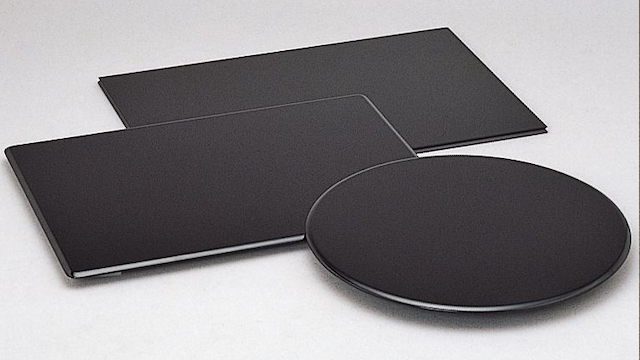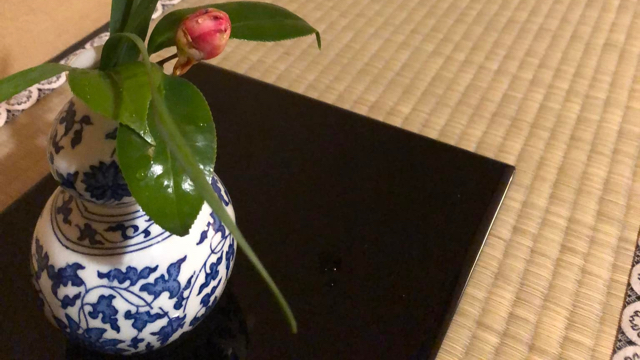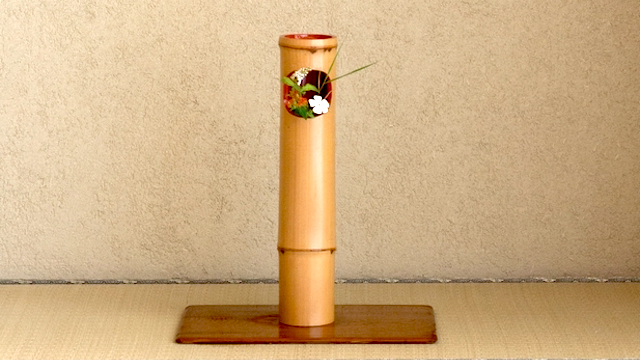
Usuita is a board that is placed under the vase when it is placed on a tatami mat floor.
There are three types of thin plates: 'Yahazuita', 'Hamaguriba', and 'Marukodai', and they are used according to the class of the vase, the line, and the grass. .
The yahazuita is a Rikyu-style black lacquered cypress base with a herringbone-shaped edge. It is used for true flower vase such as tsuke.
Hamaguriba is made of paulownia wood base with Tamenuri, and the edge is shaped like a combination of clam shells. It is used for row flower vase such as Kuniyaki.
Marukodai is used for Rikyu-gata, paulownia wood, with a round edge, and is used for unglazed Kuni ware such as Bizen, Iga, and Shigaraki, as well as bamboo flower vases. increase.
In addition, “kiji no clam leaves” made from paulownia, pine, cedar, cypress, and zelkova are used for bisque, yakijime, bamboo, and gourd that are not coated with glaze and are used as grass flower containers. In the large hall, ``Oita'' and ``Nagaita'' are sometimes used, and ``Hanedabon'' is sometimes used for antique copper vases.
Thin boards are not supposed to be used when placing flower vases in baskets.

Metal vases and Chinese ceramic vases are considered to be of high rank, followed by Japanese glazed and unglazed ceramic vases.
陶磁器
Madake bamboo is often used and is suitable for handicrafts. You can enjoy the expression of shapes and individuality such as "sun-cut", "single-cut", and "double-layered" like shakuhachi, using bamboo knots, distortion and stains.
竹
Basket-shaped flower vases made of woven bamboo, rattan, and wisteria vines are collectively called 'kagohana-ire'. (Bamboo baskets, rattan baskets, etc.)
籠